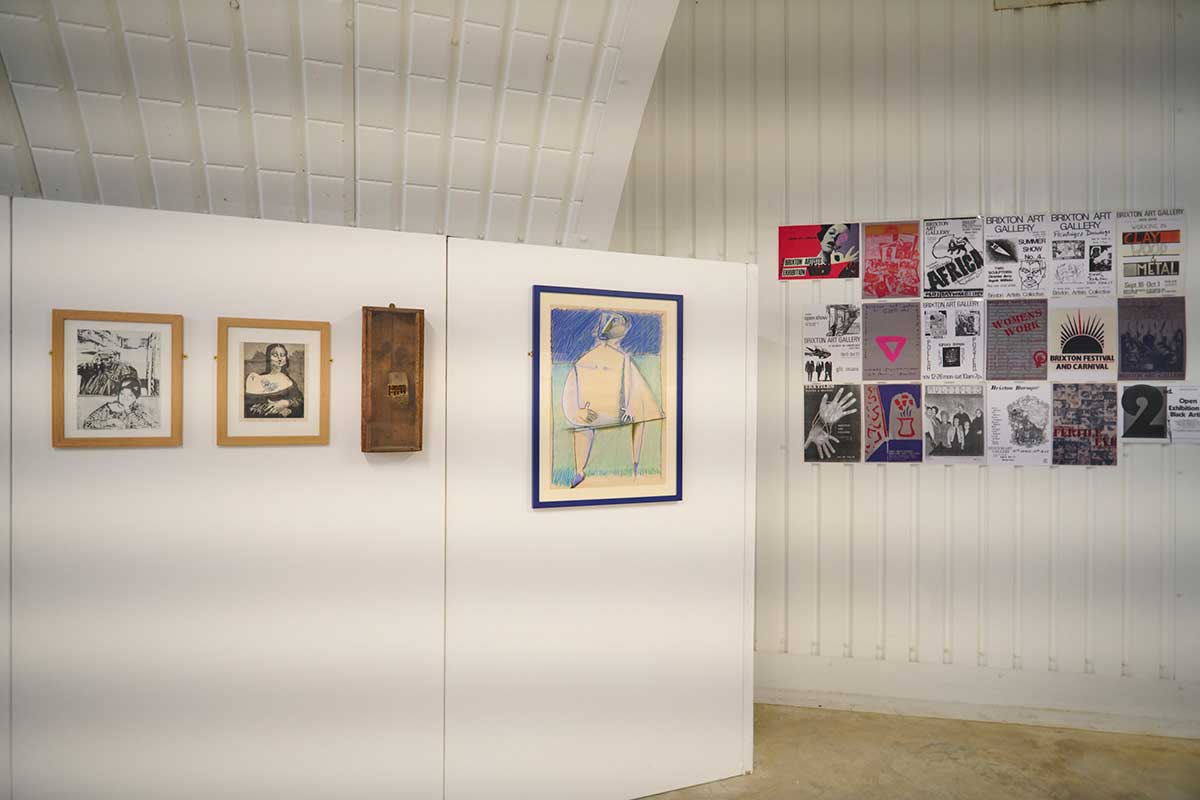Brixton has always had a proud social history. In the late 1800s, it was prominent as a place for people to meet up, drink and eat together. It has continued to be a busy, bustling area attracting a rich array of diverse characters and business people with an entrepreneurial spirit.
Fast forward just under a hundred years to the 1980s and we begin to see a different side: a place in which art and artistic expression gained momentum. In 1983 the original Brixton Art Gallery was opened and in June the 40th anniversary of the event will be celebrated.
This important moment won’t go unnoticed by us all here at Brixton Arches, as the gallery occupied three of our arches. This month the Brixton Art Gallery Redux will take place in Unit 21 here. It’s been organised by Andrew Hurman, who was co-founder of the original gallery. We’re so proud of our heritage here, and with that in mind here’s a little about the history of this special place.
BRIXTON’S ARTISTIC ARCHWAY
For a period of three years spanning 1983-86, Brixton Art Gallery occupied the arches at 19 and 21 Atlantic Road and another that backed onto Brixton Station Road. These three arches were also interconnected by a corridor area, giving enough space to set up an office space for the team there, and a small coffee bar for refreshments.
The funding for the Gallery was provided by the Greater London Council (GLC), and Lambeth Council, and there was further support which came from the landlords at the time: known as the British Rail Property Board. They let the space to the collective and allowed them to use it with a greatly reduced rent.
A DIVERSE COLLECTIVE
From the outset, the collective of artists was eclectic and diverse and everyone involved had a voice and an input. Any decisions relating to how the Gallery was run – including what would be exhibited, were made at meetings that were open for anyone to attend and speak at.
Some of the shows were put together by members of the different artist’s groups, formed during meetings that were held in the Gallery. From these fruitful meetings came opportunities for marginalised groups to come together and showcase their work, talent, and culture. Brixton became the place to go to see works of art by LGBT artists, feminist groups, and one of the most talented collectives of the day – Mirror Reflecting Darkly, an artist’s group made up entirely of women of colour.
While diversity and inclusion were key elements of the collective, it was also considered important to encourage everyone to participate in art and discover their innate creativity. By doing so, the artists believed they would reach as wide an audience as possible, and give opportunities and a voice to people who were often unheard – so they could present their vision and illustrate their stories.

ENCOURAGING OUTSIDE CURATION AND ICONIC SHOWS
Importance was placed on ensuring that voices from inside the collective were seen and heard, but also that shows were organised by outside curators. Over the years these included Rasheed Araeen’s Third World Within; the GLCs Reflections of the Black Experience, curated by Monika Baker, and the group of exiled South African artists who came together to stage the Monti Wa Marumo! show.
There were other notable and iconic shows held there too, including Leaving the 20th Century: the first solo exhibition by Jamie Reid, who you might know best as the graphic designer for the Sex Pistols (it was Jamie who developed the famous ransom note typography used on their artwork).
Other notable showcases included Roadworks, a Performance Art festival. It was as part of this piece Mona Hatoum walked barefoot in Brixton – trailed by a pair of Doc Martens boots. Mona was one of the four artists who showed work at the Gallery, who then later went on to become a Turner Prize nominee. The other three artists who shared the same accolade were: Cathy de Monchaux, Zarina Bhimji, and Ingrid Pollard, respectively.
FIFTY EXHIBITIONS, OVER ONE THOUSAND ARTISTS
Over the period of June 1983 to December 1986, Brixton Art Gallery staged 50 exhibitions that showcased work from over one thousand individual artists.
These events were always well attended. In fact, weekday visitors averaged one hundred, with that figure doubling on Saturdays. It’s a measure of how well-respected the site was, as other similar-sized galleries were never able to match this, and proves how a strong collective of inclusive and diverse voices can create a force for good in the world.
The Brixton Art Gallery proves exactly what can be achieved: from renting a building and turning it into a successful and thriving creative space, to setting up something that gives back to the community and promotes it as a positive place to live in and visit. We’re so pleased and proud to be able to tell this story and have these buildings as part of our history.
If you’d like to pay a visit and take a look at the Brixton Art Gallery Redux, you’d be more than welcome. It runs from Thursday 22nd June through to Saturday 1st July at Unit 21 Atlantic Road, SW89HX.
FOR SHORT-TERM LETS IN BRIXTON LOOK NO FURTHER: GET IN TOUCH WITH BRIXTON ARCHES TODAY.
We always want to do our bit to encourage local businesses and entrepreneurs with similar core values. If you’re thinking of relocating to the area and want advice on short-term lets then we’re more than happy to have a no-obligation chat with you. Get in touch with Brixton Arches today.
If you would like to find out more about the Brixton Art Gallery or view the archive please visit: Brixton Art Gallery – Archive 1983-1986 (brixton50.co.uk)



